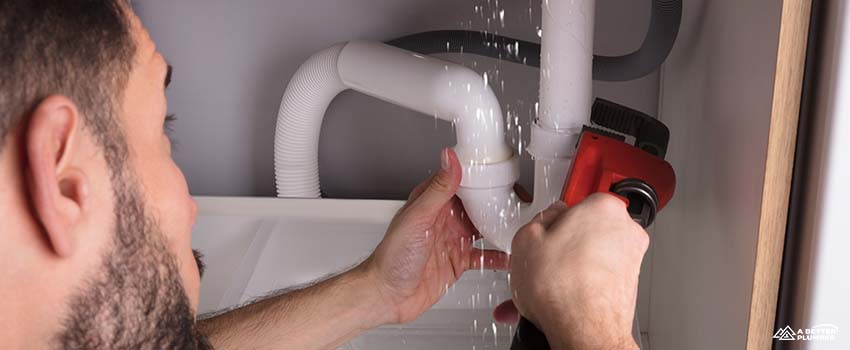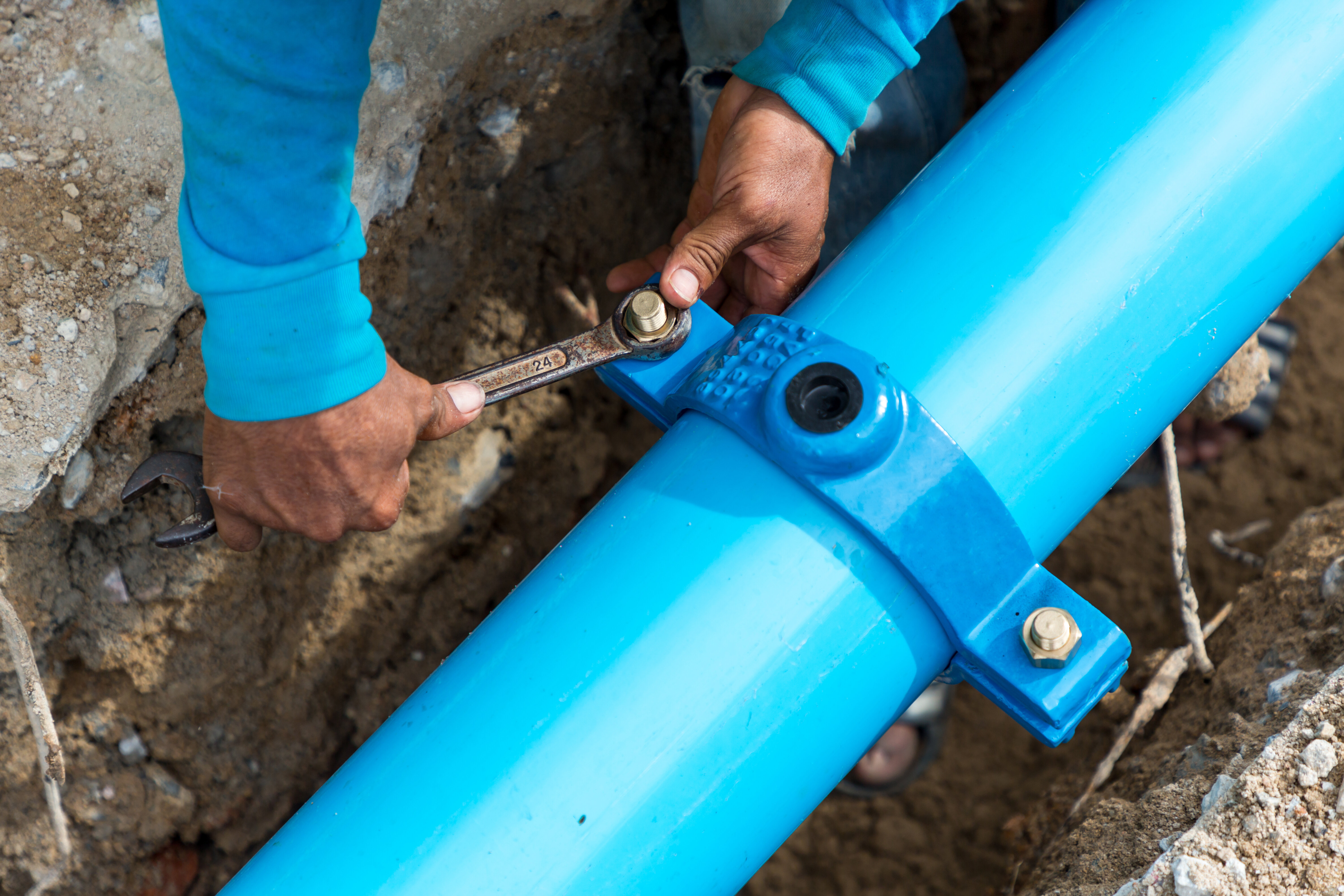This article following next about What Is Water Hammer & How Do You Stop It? is pretty much enjoyable. You should check this stuff out.

Intro
Have you ever before switched off a faucet and heard a loud bang or knocking audio coming from your pipelines? That distressing noise, usually referred to as a sudden thud or clunk, is known as water hammer. It's not simply an aggravating trait of older homes-- water hammer can take place anywhere, and if left uncontrolled, it can bring about more substantial plumbing problems. In this post, we'll debunk water hammer, explore its reasons, and talk about sensible ways to deal with and prevent it. Think about it as your best guide to taming those rowdy pipes once and for all.
Unexpected Shutoff Closure
Swiftly shutting down a faucet or appliance can create an abrupt water flow halt. Dishwashers and washing equipments, which have automatic valves, are usually culprits in creating these unexpected stops.
Incorrect Pipeline Sizing
Pipes that are as well little for the amount of water streaming with them can raise the chance of water hammer. Limited space indicates greater velocity, and greater speed implies stronger pressure surges.
High Water Stress
Too much water pressure not only drainages and cash but also amplifies the impacts of water hammer. The more pressure behind the circulation, the more challenging it hits when forced to quit.
Why is Water Hammer a Problem?
You might ask yourself, "Is water hammer simply a noise concern?" It's more than that. While the noise can be bothersome, the real difficulty exists beneath the surface area.
The Scientific Research Behind Water Hammer
Water hammer is fundamentally concerning kinetic energy. When water moves with pipes, it carries energy. If something interrupts that movement-- like a shutoff closing also promptly-- this energy transforms right into a stress surge. Pipelines, installations, and valves experience this spike in pressure, usually resulting in that banging noise you fear.
Usual Reasons For Water Hammer
Understanding the root causes of water hammer is the initial step to solving it.
What is Water Hammer?
Water hammer is a shockwave of stress that takes place within your pipelines when water flow stops or changes direction quickly. Imagine a group of runners sprinting down a slim corridor, only to have a door bang shut at the end. The sudden quit creates a chain reaction, resulting in a crash of bodies. In your pipes system, water imitates those joggers, and when it's forced to stop instantly, it creates pressure waves that travel through the pipelines.
Noisy Piping and Family Disturbances
The most noticeable issue is the racket. Hearing clunks and bangs every time you do washing or run the dishwasher can interfere with the tranquility in your home. It might not feel like a big deal at first, however over time, it can wear on your nerves.
Prospective Damages to Plumbing System
Water hammer puts anxiety on valves, joints, and fittings. Repeated pressure surges can weaken connections, cause leaks, or perhaps cause pipeline ruptureds-- a costly and bothersome situation nobody wants to face.
Long-Term Deterioration
Gradually, relentless water hammer can bring about even more frequent repair work, early wear on elements, and a shortened life-span for your pipes system. Think about it as small stress gathering right into a bigger issue.
Identifying Water Hammer in Your Home
Before you can take care of a problem, you need to validate it's there. So, exactly how do you recognize if you're dealing with water hammer?
Indications and Appears
Pay attention for knocking or battering noises when switching off taps or running home appliances. If the noise appears to come from within the walls, there's a likelihood water hammer is at fault.
Conducting a Basic Examination
Attempt transforming taps on and off at various speeds. If you discover the noise just accompanies specific components or at specific times, you have actually collected hints concerning where and when water hammer is taking place.
Temporary Fixes to Manage Water Hammer
If water hammer is driving you up the wall, there are instant actions you can take.
Changing Water Pressure
If your home's water stress is established too high, take into consideration installing a stress regulatory authority or readjusting the existing one. Reducing the pressure can decrease the strength of those shockwaves.
Safeguarding Loosened Pipes
Pipelines that aren't properly protected can magnify water hammer noises. Adding pipeline straps or supporting materials can aid maintain them and prevent them from rattling against surface areas.
Making Use Of Air Chambers or Arrestors
Air chambers are easy tools that catch a pocket of air in an upright pipe. This air serves as a pillow, absorbing the pressure surge. If you do not have them, mounting water hammer arrestors can achieve a comparable impact.
Long-Term Solutions and Upgrades
If you're seeking even more permanent repairs, it might be time to think about some upgrades.
Setting Up Water Hammer Arrestors
These tools, created particularly to counter water hammer, can be placed near components or devices. They have a piston and chamber that soak up stress changes prior to they spread throughout your system.
Identifying Your Comfort Level
If you come in handy, you might be able to handle basic fixes like mounting arrestors or adjusting stress. However if you're not sure or if the trouble continues, there's no pity in seeking professional aid.
When to Call a Plumbing
If your attempts at taking care of water hammer stop working or if you think hidden problems within your walls, a licensed plumber can detect the problem properly and recommend enduring services.
Protecting Against Water Hammer from the beginning
The most effective method to deal with water hammer is to avoid it prior to it begins.
Adding Expansion Containers
A development container attached to your hot water heater can help reduce stress variations triggered by thermal growth. By offering water a location to go when heated up, you minimize stress on pipes.
Upgrading Pipeline Products
If you're preparing improvements or taking care of an older home, upgrading to more adaptable piping products, like PEX, can help reduce the threat of water hammer. These materials can take in shock far better than inflexible pipelines.
Balancing Costs with Advantages
Remember, the option-- pipe damage, leakages, and constant aggravation-- can be even more pricey in the future. Think about these repairs as an investment in peace of mind and home value.
Expenses and Factors to consider
Buying avoiding or dealing with water hammer can save you cash over time.
Approximating Expenses
The expense differs relying on the seriousness of the trouble and the picked service. Basic repairs like adding arrestors or pipeline sustains might be reasonably cost-effective, while much more comprehensive upgrades can cost even more.
DIY vs. Professional Help
Some property owners like a good do it yourself difficulty, while others like to leave pipes concerns to the pros.
Designing an Appropriate Plumbing Layout
If you're building a brand-new home or undertaking significant renovations, consult a plumbing technician about designing a design that decreases abrupt water circulation modifications and consists of proper shock-absorbing aspects.
Routine Upkeep Checks
Much like your vehicle requires regular solution, so does your plumbing system. Normal checks for leaks, stress changes, and strange noises can catch issues early and avoid water hammer from taking hold.
Conclusion
Water hammer isn't just an irritating noise; it's a signal that your plumbing system requires focus. By recognizing what triggers it, taking immediate activity, and investing in lasting services, you can ensure your pipelines stay calm and quiet. Whether you choose a basic do it yourself method or call in a professional, attending to water hammer is a step toward a more calm and trusted home.
What Is Water Hammer & How Do You Stop It?
How Water Hammer Is Triggered
Water hammer is often triggered by a valve closing at the end of a pipeline. Tilting disc, swing, and double-door check valves tend to close very quickly, creating high pressure, but water hammer can also be caused by pump failure.
Water is an incompressible liquid, so an impact against a closed valve causes a shock wave that propagates at the speed of sound. It will continue until it hits the next pipe elbow or end of a pipeline.
In homes, water hammer often occurs when a washing machine valve closes after the drum reaches full capacity. Water continues to flow rapidly. It has nowhere to go, so it slams against the side of the pipe, which can bump against other pipes or the frame in the wall.
What Causes Water Hammer?
High water pressure: Excessive pressure can make the issue more pronounced. Quick-closing valves: Appliances like washing machines or dishwashers often have quick-closing valves that create abrupt water flow changes. Loose pipes: Pipes that aren t properly secured can amplify the noise and vibrations. Faulty air chambers: Many plumbing systems include air chambers that absorb shock. If these become waterlogged, they lose effectiveness. How to Stop Water Hammer
Drain the air chamber: Home plumbing systems often have an air chamber to absorb the shock of water when a valve closes. Located inside walls, an air chamber can become waterlogged. This can be fixed by draining your plumbing system, which requires turning off the main water valve and opening the highest faucet in your home. Then drain water from the lowest faucet. The chamber should fill up with air once the water is drained and resolve your water hammer problem. Install a water hammer arrestor: This device has an air-filled cylinder to absorb the impact of abrupt increases in water pressure. Most water hammer arrestors are installed between the shut-off valve and supply line via screw-type connectors. One arrestor should be installed on the hot-water supply line and another on the cold-water supply line. Adjust the water pressure: If the water pressure in your pipes is too high, the steps above will only work temporarily. You can regulate the pressure by adjusting the pressure-reducing valve, which is often located where the main water supply enters your home. To adjust the valve, turn the handle or, if necessary, with a wrench or screwdriver. The setting should be below 50 pounds per square inch (psi). Reducing water pressure also conserves water, saves energy, and can prolong the life of plumbing appliances. Tighten your water supply lines: Sometimes, the U-shaped straps to fasten water pipes to wooden joists or studs aren t tight enough. As a result, pipes can shift and cause noise. You can fix the problem by tightening the screws holding loose pipe straps. Additional straps can be added to improve stability. Pipe straps are usually made of thin metal or plastic, while padded types are available to reduce vibration. Insulate water supply lines: Foam pipe insulation prevents pipes from freezing and can create a cushion for loose pipes. They fit easily over your water supply line and can usually be purchased in 6-foot lengths. Effect of Water Hammer on Plumbing Systems
Water hammer may happen occasionally, but it can cause a sudden plumbing failure or lead to damage over time. It may occur due to excess water pressure in supply lines, or perhaps plumbing pipes have come loose.
Pumps, valves, expansion joints, gasketed joints, and welded joints can be seriously damaged, as can various fittings and connections. Water leaks, ruptured pipes, and property damage can result.
https://villageplumbing.com/blog/what-is-water-hammer-and-how-to-stop-it/

As a keen person who reads about , I figured sharing that excerpt was appropriate. Sharing is good. Helping people is fun. We enjoy your readership.
Details